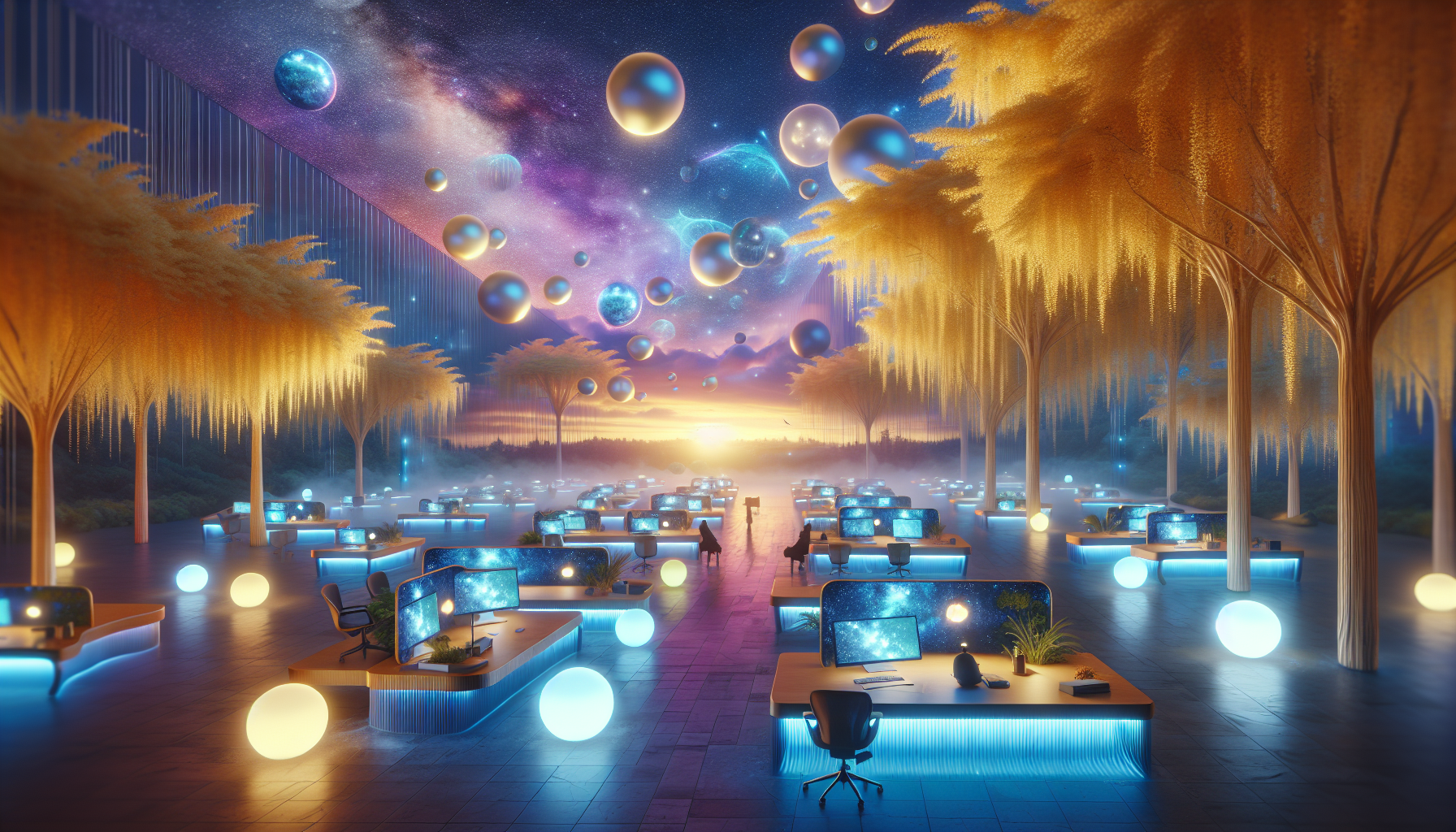1. “Transforming Workspaces: The Power and Potential of Biophilic Design”
A breath of fresh air in office design, the biophilic design trend is currently taking the corporate world by storm. Merging the boundaries between nature and workspace, it aims to create a more harmonious and productive environment.This trend brings the outdoors in, by integrating natural elements into the workplace, thereby reducing stress, enhancing creativity, and improving well-being.
At the heart of biophilic design is a profound respect for human attraction to nature and biological responses to natural settings. This design philosophy is not just about adding a few houseplants or hanging pictures of nature. It’s about creating a workspace that fundamentally reconnects employees with the natural world, utilizing elements such as natural light, green walls, water features, and even office layouts that mimic natural landscapes.
One major principle behind biophilic design is the utilization of natural light. Many studies suggest that exposure to natural light can significantly improve mood, productivity, and overall health. Designing offices with large windows, skylights, and open spaces that allow sunlight to permeate can create a brighter, more welcoming environment. These adjustments can potentially reduce the dependency on artificial lighting and subsequently decrease energy costs.
Green walls or living walls are another pivotal feature of biophilic design.
These are essentially walls covered with plants, providing a visually appealing and calming backdrop while improving air quality. Employees working in environments with greenery have been shown to exhibit increased concentration levels and productivity.
Water features, such as indoor fountains or aquariums, can also be incorporated into biophilic design. The sound of flowing water is soothing and can act as a white noise barrier, reducing distracting ambient sounds in open-concept offices.
Office layouts that emulate natural landscapes, known as ‘biomorphic design’, are another innovative concept.

They are not just about arranging furniture but are more about creating spaces that flow like nature does. This could mean creating areas within the office that resemble a path through a forest, or arranging workstations to mimic a cluster of trees. Such designs can reduce stress and inspire creativity among employees.
Recently, the biophilic design has also been extended beyond physical architecture and interior design to digital and virtual platforms as well.
This could involve using screen savers, wallpaper, and artwork featuring natural landscapes or sounds of nature like bird songs as background music.
Proponents of biophilic design believe that the benefits extend far beyond aesthetics. By fostering a deeper connection between employees and the natural world, it can lead to increased productivity, improved mental health, and more positive interactions in the workplace. It represents a significant shift in how we perceive the office environment, focusing more on employee wellness and satisfaction.
While it’s important to acknowledge that every workplace is unique, the principles of biophilic design offer a refreshing perspective on the potential of our work environments.
Creating a workspace that fosters a connection with nature could be the key to a happier, healthier, and more productive workforce. It’s not just about building a better office; it’s about building a better experience.
So, whether you’re planning a complete office overhaul or simply looking to bring a touch of nature into your workspace, consider the principles of biophilic design.
It’s a trend that’s more than just a design – it’s a catalyst for change, fostering an environment where employees can thrive. Incorporating even small, green changes can make a world of difference in the workplace. After all, nature is the best designer there is.